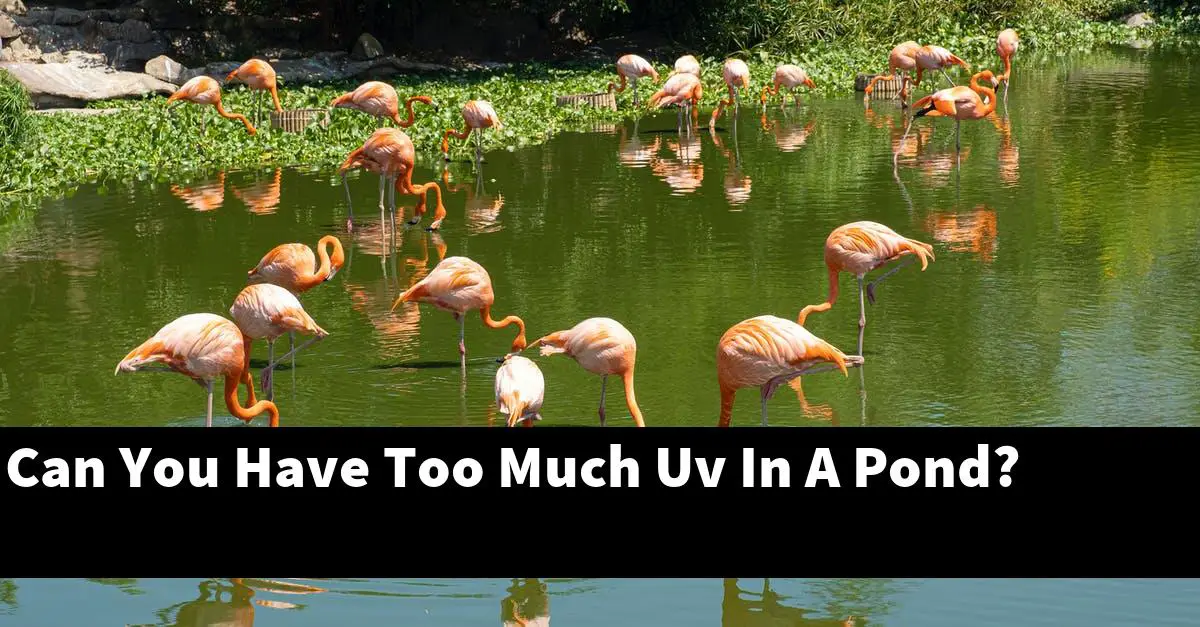When we think of aquatic ecosystems, the delicate balance of life within a pond often captures our imagination. A crucial element in maintaining this balance is the clarity of water, influenced significantly by ultraviolet (UV) light. Many pond enthusiasts ponder the query, “Can you have too much UV in a pond?” This question is pertinent, as excessive UV exposure can lead to a myriad of consequences that may not be immediately apparent. In this article, we will explore the multifaceted implications of UV light within pond environments, addressing common observations and examining the underlying reasons for our fascination with this topic.
The primary function of UV light in pond management often centers on its germicidal properties. It is frequently employed in UV sterilizers to combat problematic microorganisms that can cloud water and contribute to other issues such as algae blooms. By effectively eliminating bacteria, viruses, and other pathogens, UV sterilizers play an essential role in enhancing water quality. However, while UV light serves this beneficial purpose, the question of moderation arises. Can the very tool used to purify a pond also cause adverse effects?
One common observation among pond owners is that after installing or utilizing a UV sterilization system, water clarity improves significantly. However, this clarity sometimes creates a false sense of security. Over-relying on UV systems can diminish one’s understanding of the complete ecological interactions taking place beneath the surface. Aquatic ecosystems thrive on a complex interplay between light, plants, fish, and microorganisms. An overstimulation of UV rays may inadvertently disrupt these natural processes, leading to unforeseen consequences.
For instance, excessive UV exposure can adversely affect beneficial bacteria populations in the pond. Decaying organic matter and surplus nutrients in the water often necessitate the presence of these bacteria to decompose waste effectively. If the UV system eradicates these helpful microbes, the pond can become prone to issues such as high ammonia levels, which can be detrimental to fish health. This chain reaction highlights the importance of establishing a balanced approach to UV usage, rather than a blind reliance on technology.
Furthermore, excessive UV light can hinder the growth of aquatic plants, which are essential for oxygenation and habitat formation. Aquatic plants not only provide aesthetic appeal but also create a sanctuary for fish, promoting a thriving environment. Plants such as water lilies, anacharis, and hornwort are vital components that contribute to a pond’s ecological equilibrium. If UV exposure is excessive, it may lead to diminished plant growth and, subsequently, reduced oxygen levels. This can create an inhospitable environment for fish and other aquatic organisms.
Another dimension to consider is the impact of UV light on the evolutionary aspects of pond life. Aquatic organisms have adapted over millennia to thrive under specific light conditions. Excessive UV exposure may accelerate the adaptation processes by favoring certain species over others, potentially leading to homogenization within the ecosystem. Such changes can result in diminished biodiversity, which undermines the resilience and stability of the pond. Maintaining a rich variety of life is essential, as it provides a buffer against disease outbreaks and environmental fluctuations.
In addition to these ecological considerations, there is an interesting psychological dimension to the notion of UV in ponds. The clarity brought about by UV light often evokes a sense of tranquility and aesthetic pleasure. People are drawn to clear waters, which reflect a pristine image, often leading to a greater appreciation of the natural environment. This visual appeal can make one inclined to overutilize UV technology, equating clarity with health and sustainability. However, recognizing the underlying complexity of these interactions can deepen our connection with aquatic ecosystems and enhance our stewardship practices.
To foster a healthy pond ecosystem, it is imperative to adopt a more nuanced view concerning UV light’s role. Effective pond management involves not only utilizing UV sterilizers but also ensuring a well-rounded approach that encompasses other aspects of pond care. Regular monitoring of water parameters, incorporating aquatic plants, and encouraging beneficial bacteria are essential practices to create a sustainable environment. Utilizing natural filtration systems alongside UV technology creates a balanced ecosystem that can withstand fluctuations and challenges, making it less reliant on single solutions.
Moreover, integrating knowledge about seasonal variations in UV exposure can also enhance pond care. For instance, during hot summer months, UV rays can penetrate the water more intensely, emphasizing the necessity of monitoring and adjusting UV usage based on specific environmental conditions. Seasonal food-web dynamics can also dictate the levels of beneficial bacteria, aquatic plants, and fish populations, making it essential to adapt UV strategies throughout the year appropriately.
In conclusion, while UV light undoubtedly plays an essential role in maintaining water clarity and combating harmful microorganisms in ponds, understanding the potential consequences of excessive UV exposure is paramount. Striking a balance between using UV technology and recognizing the importance of holistic pond management practices will lead to healthier, more vibrant ecosystems. As with most things in life, moderation is key. By embracing a multifaceted approach, pond enthusiasts can cultivate environments that are not only beautiful but also resilient, fostering a deeper connection with the delicate tapestry of life within our waterways.
